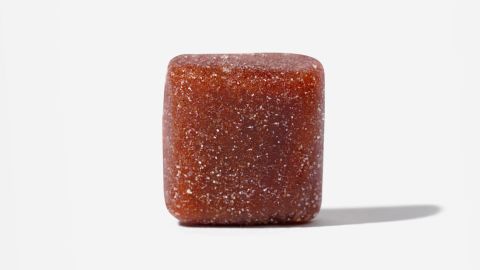CNN
—
The end of October is a sugar avalanche as kids don their Halloween costumes and snag as many sticky sweets as they can. But the prospect of collecting and eating a whole trick-or-treat bag of candy gets a little scary when you think about the impact.
Not only are most Halloween favorites not good for children’s health, but many candy ingredients are sourced through processes that harm the planet. Cacao is often grown in rainforests that have been clear cut for farming, for example. And unsustainable sugarcane production can also emit large amounts of planet-warming gas.
Then there’s all the candy that goes to waste in the aftermath.
But Amy Keller says she has a sweet solution. Keller is a member of the Spangler Candy family — the company behind iconic treats like Dum Dums Lollipops. She is putting a new spin on the family business by attempting to tackle children’s nutrition, global food waste and the climate crisis with Climate Candy.
The plant-based, chewy FAVES candies contain 96% fruits and vegetables including apple juice, various fruit purees, sweet potato powder, rice flour, and more. And each pack of FAVES contains four servings of fruits and vegetables that would have otherwise gone to waste at farms and grocery stores, the company says. It includes carrots, beets, sweet potatoes, squash and pumpkin — all nutritious superfoods — and comes in flavors like cherry, orange, lemon and strawberry.
“Food is fuel,” Keller, the co-founder and chief executive officer of PurePlus, told CNN. “For me, building something like Climate Candy is something that’s affordable and accessible. You can get into the doorsteps, into the household, and get people talking about climate in just a very fun way.”
About a third of all food is wasted globally, according to Project Drawdown, and that food waste accounts for roughly 8% of global greenhouse gas emissions. In the US, ReFed — a nonprofit dedicated to ending food loss and waste across the country — estimated that nearly 90 billion meals’ worth of food goes either unsold or uneaten each year.
That’s terrible for the planet, because wasted food — either from grocery shelves, restaurant leftovers, or forgotten perishables in refrigerators — ultimately ends up in landfills, where it generates methane, an invisible, odorless gas with more than 80 times more warming power in the near-term than carbon dioxide.
Keller said Climate Candy offers a solution to the food waste problem because of the ingredients her company chooses.
The best-looking fruits and vegetables typically end up in the grocery stories. They are the right shape and dimensions to sell in stores and they fit consumers’ ideas of what fruits and veggies should look like.
But there’s a second tier of produce “that ends up being either unharvested, put back in the land, or sent to livestock feed or landfills,” said Keller, who has had a career working in environment and health. “And these are perfectly good fruits and vegetables.”

Climate Candy keeps a bit of that produce from being wasted and transforms it into something that has a much longer shelf life.
“There’s more than enough to go around,” Keller said of the wasted produce. “And none of the food banks can even keep up because it’s a perishable.”
With Halloween approaching, Keller said Climate Candy would be a valuable add to the trick-or-treat bags — but she also envisions the treat as a healthy alternative to traditional candy year-round.
“Halloween is going to come and everyone’s going grab whatever that’s a snack size, and that’s your one day to be indulgent,” Keller said. “What we’re saying is, guess what, the other 364 days a year? This can be what you can have from a sweet-tooth perspective. And I think it’s just something that could be nostalgic for that next generation.”
Correction:
An earlier version of this story misstated the ingredients in FAVES candy.